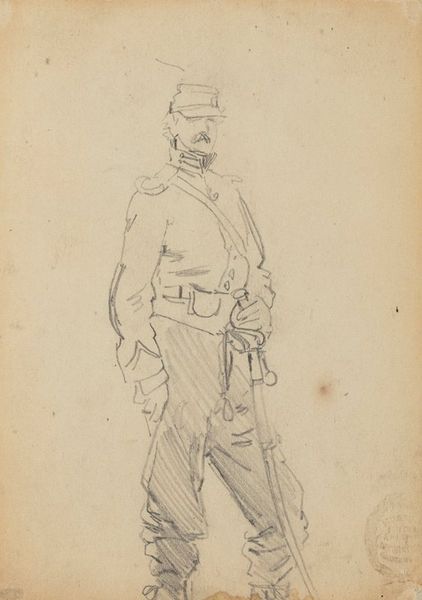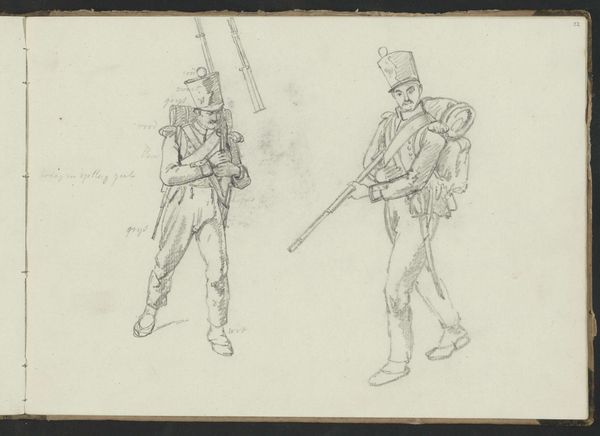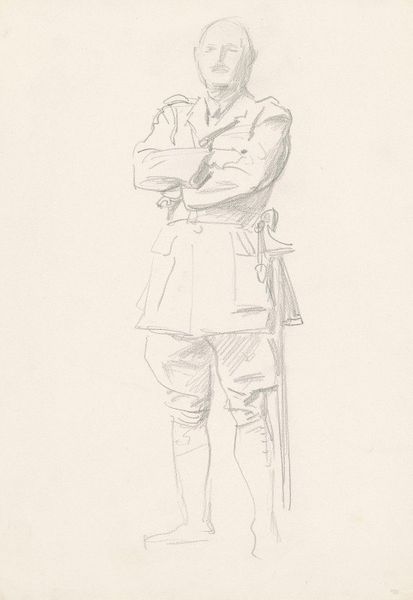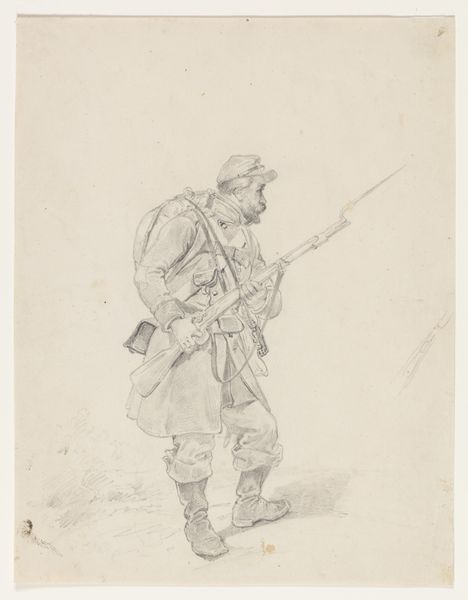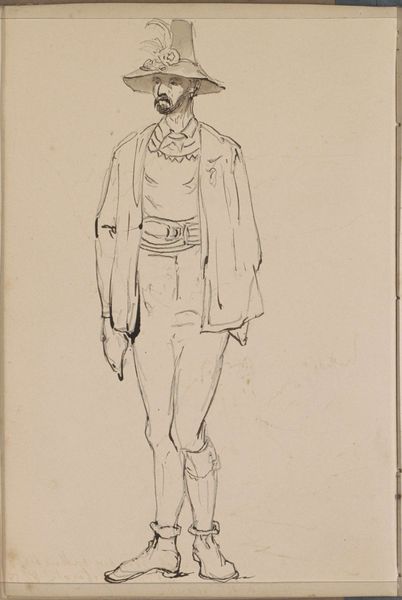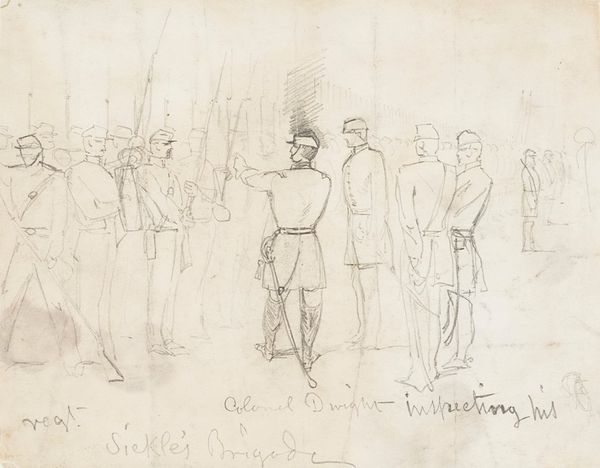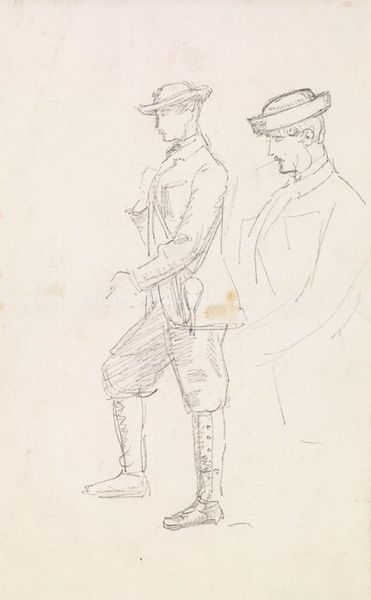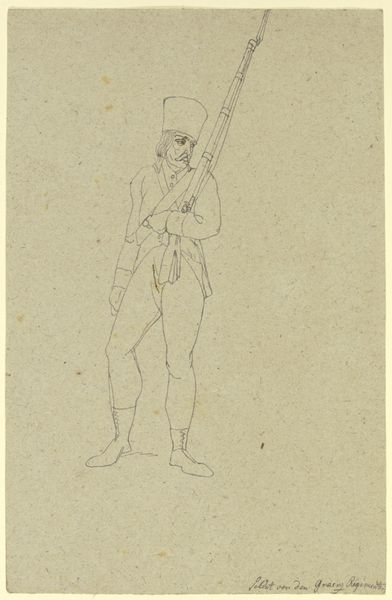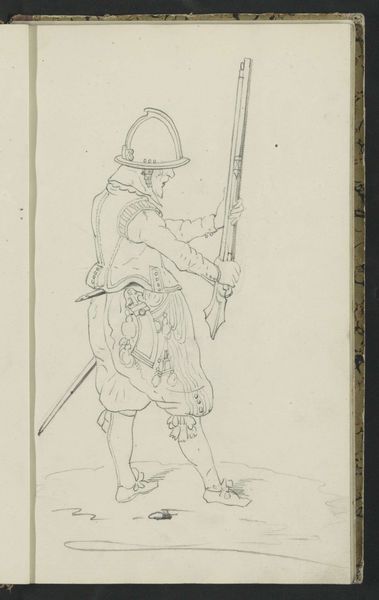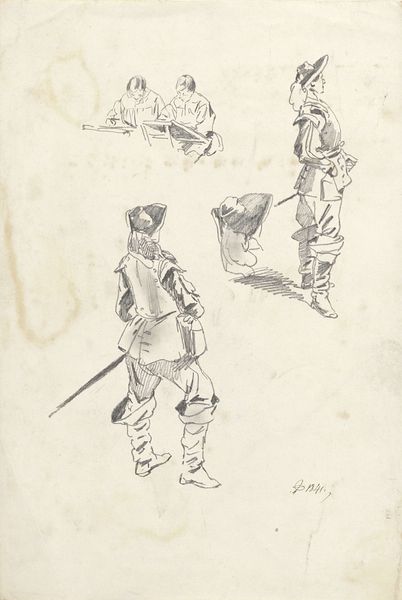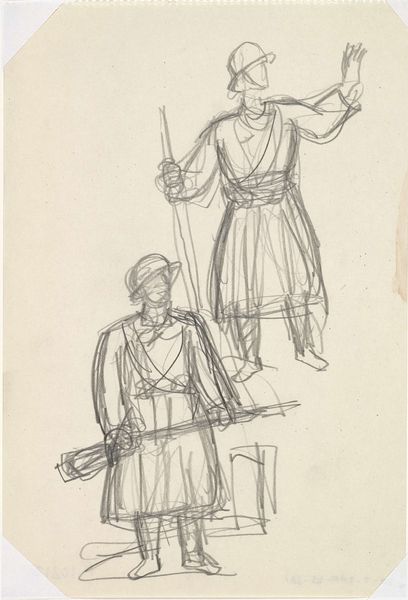
Studies of Generals Plumer and Haig for ‘General Officers of World War I’ 1920 - 1922
0:00
0:00
drawing, pencil
#
portrait
#
drawing
#
pencil sketch
#
pencil
#
academic-art
#
modernism
#
realism
Copyright: Public Domain: Artvee
Curator: These are John Singer Sargent's pencil studies of Generals Plumer and Haig, completed between 1920 and 1922. What strikes you first? Editor: The line quality, definitely. Look at the raw process; you can practically see the artist wrestling with the materials, trying to capture form with minimal fuss. Curator: It’s interesting, isn’t it? Sargent, known for his glamorous society portraits, focusing on these military figures just after the devastation of the First World War. It speaks to a shift, perhaps, in the societal understanding of heroism and power. How do we reconcile that gilded age with the reality of industrial warfare? Editor: Exactly! It exposes the labor—both Sargent’s physical effort to produce the image, and, more pointedly, the labor of these men being studied, acting as tools of a larger sociopolitical machine. The material, pencil, feels very direct, immediate in capturing these "General Officers." It’s not about capturing ideal beauty or glorifying wealth, but documenting the mechanics of command. Curator: The sketched quality emphasizes the human element. We’re seeing studies, not finished portraits—vulnerable depictions. Consider the colonial implications embedded in the depiction of these men and their role in the war effort. These aren't objective portrayals, but studies rooted in very real colonial power structures. Editor: And the question becomes: how much does the medium itself influence that portrayal? Sargent opted for the accessible medium of graphite on paper, challenging traditional boundaries of "high art," allowing it a sense of everyday. This work makes the generals—and by extension, warfare—less a grand ideal and more an issue of tangible labor, accessible consumption. Curator: I agree. The unfinished aspect, the medium used, opens questions rather than providing answers. The pencil allows a critical view on structures and on Sargent's role in upholding or challenging them. Editor: Precisely. For me, analyzing the method, these unfinished pencil renderings provide much deeper questions about societal structures and access in the war, versus simply showcasing portraits of leadership.
Comments
No comments
Be the first to comment and join the conversation on the ultimate creative platform.

